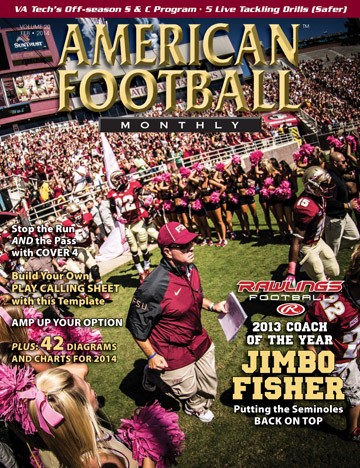Article CategoriesAFM Magazine
|
Out in the Open - Live tackling drills can improve your team’s open field tackling.by: Drew ChristFormer Defensive Coordinator, University at Albany © More from this issue As today’s game stretches laterally to encompass the entire width of the field, the ability to open-field tackle is at a premium. One of the most difficult skills to acquire as a defensive player is the art of open-field tackling. Even elite athletes need to improve and sharpen their skill sets. How do you enhance those abilities and replicate them at game speed? The answer is simple – live tackling, offensive skill vs. defensive skill. At the University at Albany, Head Coach Bob Ford has a motto that is time-tested and repeated to his assistant coaches: “Make Cs into Bs, and Bs into As”. We recruit the best players we can and they must fit into our program, not vice versa. We are going to then coach them to become better players. Here is how we do it in regards to tackling.
|
|
|||||||
| HOME |
MAGAZINE |
SUBSCRIBE | ONLINE COLUMNISTS | COACHING VIDEOS |
Copyright 2026, AmericanFootballMonthly.com
All Rights Reserved





